Chicken ghee roast remains one of the more complex curries we make, paired with ghee rice or pulao.
This curry has a distinctively different aroma because of the immense amount of ghee used during the roasting process.
It smells a lot like a mix of Biryani and chicken curry.

This is a Mangalore staple, and you’ll find it in practically every restaurant in northern Kerala, Mangalore, and southern Karnataka.
This is my twist: adding more onions to enhance the flavors. Ghee is the hero ingredient in this recipe.
If you want authenticity without ghee, try Nadan Kozhi Curry or Varutharacha Chicken Curry.
Jump to:
What is Chicken Ghee Roast?
Chicken Ghee Roast is a dish originating in Kundapur, near Udupi, in the southern Indian state of Karnataka.
A hallmark of Mangalorean cuisine, this dish stands out for its vibrant red color, which was traditionally achieved using roasted Byadgi chilies, known for their deep hue and mild heat.
Combined with other aromatic spices, these chilies are roasted in generous amounts of ghee, which gives them an irresistible aroma.
Its stunning color and unique flavor profile set it apart from other chicken curries across India, making it a true culinary gem of South India.
If you're a fan of bold, spicy flavors, you'll also love exploring other regional chicken dishes like Kerala Chicken Biryani, a specialty from Kerala.
Why You'll Love This Recipe
Smell: The smell of roasted ghee is divine, and it feels like you are attending a wedding
Color: It has a dark red Kashmiri chili coloring that contrasts nicely with rice-based dishes and looks good on the plate.
Taste-rich: This dish feels indulgent and luxurious, perfect for special occasions.
Easily available ingredients: The recipe uses common pantry staples typically stocked in most Indian households.
Key Ingredients in Chicken Ghee Roast
Red onions: The sweetness is pretty critical to balancing the flavor.
Chicken: Chicken pieces, preferably the thighs. If I had my way, I would have used it with skin. Breast pieces aren't right for this because the fat gives it the taste.
I used boneless, but bone-in pieces would have made for a very good flavor profile.
Ghee: Ghee is the main ingredient. It's clarified butter with a rich taste. Replacing ghee with other oils or fats is not recommended, as it will alter the unique flavor that ghee brings to the recipe.
Kashmiri chilli: Indian chilies that are lower on the Scoville scale. You want it to have a strong chilli profile but not burn your mouth.
Whole spices: Best to roast them fresh and grind them into a paste rather than use something like garam masala that gives it distinctiveness.
This technique can also be used in Kerala Style Mutton Stew to elevate the taste.
Fennel seeds: Not every kitchen stocks this, so if you can procure them, it’ll make a difference.
Lime juice: adds an essential tangy, complex, acidic flavor. Since this recipe doesn't include tomatoes, it's the only source of acid.
Indian Yogurt/curd: You will need quite a bit. This can thicken the gravy or reduce the spice level if you want to adjust towards the end.
Tamarind: For the tanginess.
Curry leaves: Preferably fresh.
How To Make Chicken Ghee Roast (Step-by-Step Guide)
1. Thin slice the onions.
2. Cut the chicken into cubes, neither too small nor too big, based on how you want to serve.
3. Add the tamarind to hot water and keep it aside. On a side note, if you love the taste of tamarind, try Kerala Style Fish Curry, packed with spices and a tart kick.
4. Roast the chilies first. You do this to avoid overcrowding.

5. Roast the coriander seeds and then add fennel, black pepper, cardamom, and cumin seeds midway and continue until you feel the roasted aroma.
6. In parallel, marinate the chicken with yogurt, ginger, garlic, chilli powder, and salt.
7. Grind together the rest of the garlic, roasted spices, and tamarind with a small amount of tamarind water, adding just enough to make it into a paste.
Gradually grind it, check the texture, and add more tamarind water as needed.
8. Heat the kadai or pan, add a dash of oil along with lots of ghee, and sauté the onions until they turn translucent. This process will take some time—at least 20-plus minutes.

9. Add the blended spice paste and continue sautéing once the onions are translucent. Use a bit more water to rinse out the blender and add it to the pan as needed to enhance it.
10. Continue sautéing the onion spice mixture until the raw smell fades away and you have a thick chutney-like gravy that feels cooked. A lot of this is done with feel, both smell and taste.
11. Once done, take the cooked mixture out and keep it separate in a small vessel. This mixture can be used as a substitute in Kerala Chicken Roast.
12. Add ghee to the same pan and sputter the curry leaves, taking care not to burn them.

13. Then add the marinated chicken to it.
14. Raise the heat and allow the chicken to cook, covered with a lid and occasionally mixing. The chicken will exude a lot of water and cook pretty fast.
15. Since I was cooking for around eight people, the chicken produced so much water that I ended up separating the cooked water mixture and storing it in another pan for later use.
This flavorful chicken stock can also be used in Indian Sweet Corn Chicken Soup to enhance its taste and richness.
16. Once the chicken is semi-cooked, add the cooked spice mixture and stir to continue cooking.

17. Once that blended in, I re-added the water as needed and continued cooking it on mid-flame until the ghee/oil started to split and came up top. This is a sign that it's pretty much cooked well.
18. Garnish with coriander leaves and serve.

Tips And Tricks
Teamwork: This dish is best prepared with an extra set of hands—one person to handle the roasting and another to focus on sautéing the onions and blending the spices.
A great recipe to tackle with friends or family. For an easy chicken curry, try our special Marry Me Chicken Curry recipe.
Plan if using a whole chicken: If you’re starting with a whole chicken, cutting it down can be time-consuming. Preparing in advance will save you effort during cooking.
Invest in a good blender: The spice mix must be ground into a fine, smooth paste. A poor blend can leave tiny spice bits in the curry.
Handle yogurt with care: When adding yogurt, reduce the heat to low-medium and cook slowly. This prevents the yogurt from curdling and blending with the other ingredients.
Perfectly sauté the masala: Avoid over-frying the masala, as it can result in a burnt, bitter taste. On the other hand, under-frying will leave the spices raw and overpowering. The key is to sauté in mid-heat until the oil separates.
Serving Suggestions
This recipe pairs beautifully with Neer Dosa, another beloved Mangalorean delicacy known for its light and lacy texture.
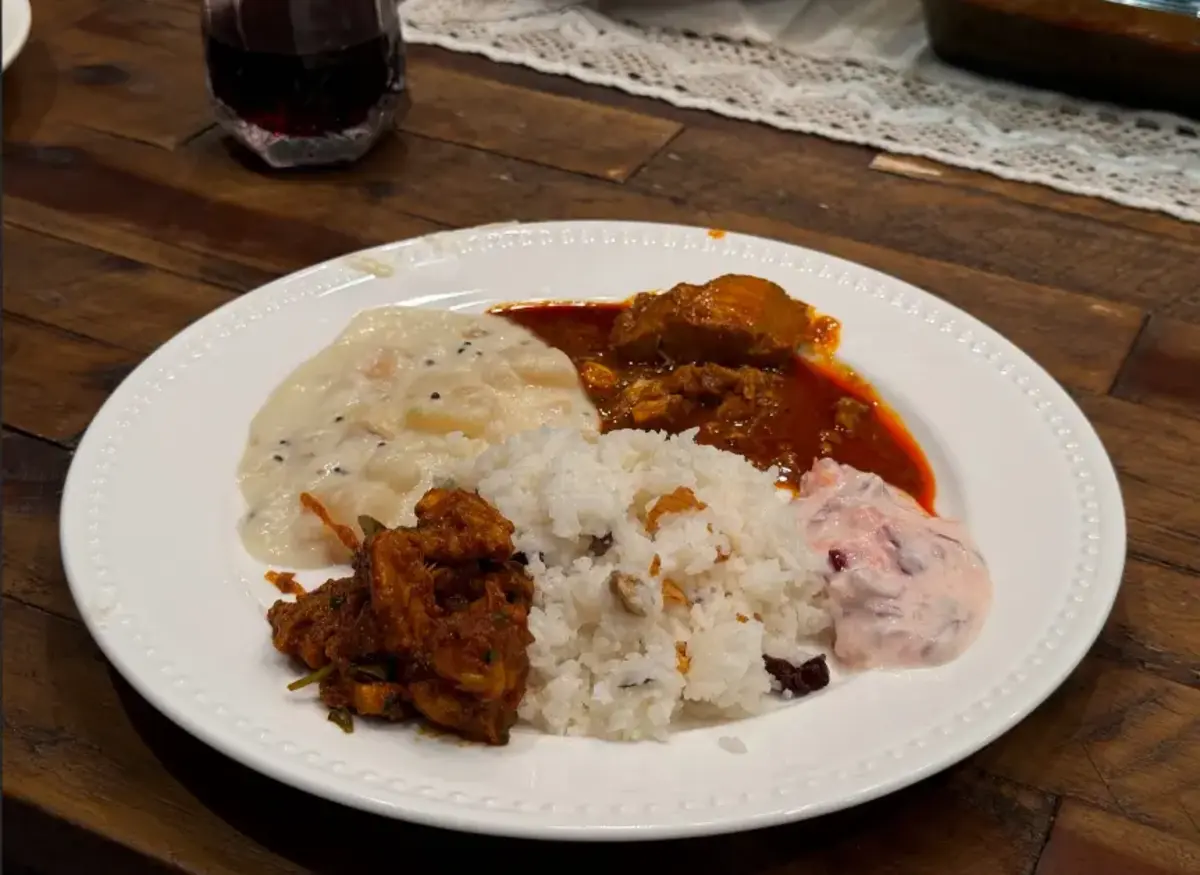
It also tastes amazing with steamed rice or soft rotis. For a complete meal, serve it alongside a cooling Onion Tomato Raita.
This combination takes the dish to a whole new level of flavor. It also pairs wonderfully with Kerala Ghee Rice.
Storage Instructions
Once prepared, this can be carefully packed in a clean, tightly sealed container and stored in the freezer for up to 2 weeks.
Variations to try
This dish can easily adapt to different tastes and dietary preferences.
Paneer or Tofu: For the vegetarian alternative, replace the chicken with paneer or tofu. Follow the same instructions, and cook the paneer or tofu with the masala as you would with chicken.
Don't miss out on our irresistible Paneer Masala Fry recipe for more options!
Shrimp or Fish: The recipe tastes incredible with jumbo shrimp or large fish pieces. Replace the chicken with shrimp or fish, and follow the same cooking steps for the masala.
Each variation retains the rich, aromatic flavors of the original dish while offering a new twist to suit different preferences.
Frequently Asked Question
Not recommended, as it will alter the unique flavor that ghee brings to the recipe.
Yes, bone-in chicken is best for this recipe as it allows the masala to infuse evenly.
It is optional, but adding it enhances the flavor by infusing the dish with a sweet taste.
More Indian Recipes To Try
I’d love to hear your thoughts if you tried this! Please leave a ⭐️ rating and a comment below. Don’t forget to share your photos on Instagram and tag @a_little_bit_of_spice

Chicken Ghee Roast
Ingredients
- 5 tablespoon Ghee
- 1 kg Chicken
- 3 number Onion
- 10 number Kashmiri Chilli
- 1 tablespoon Ginger
- 12 Cloves Garlic
- 2 tablespoon Oil
- ¼ teaspoon Turmeric Powder
- 2 tablespoon Coriander seeds
- 1 teaspoon Fennel Seeds
- 1 teaspoon Cumin Seeds
- ½ cup Yogurt
- 1 tablespoon Tamarind
- 1 tablespoon Peppercorn
- 1 number Lemon
- 2 sprigs Curry Leaves
- 2 sprigs Coriander Leaves
- 2 tablespoon Salt
- 1 cup Water
Instructions
- Cut the chicken into cubes, not too small or too big, based on how you want to serve.
- Add the tamarind to hot water and keep it aside.
- Roast the chilies first. You do this to avoid overcrowding.
- Roast the coriander seeds while adding fennel, black pepper, cardamom, and cumin seeds to it midway.
- In parallel, marinate the chicken with yogurt, ginger, garlic, chilli powder, and salt.
- Grind together the rest of the garlic, roasted spices, and tamarind with a small amount of tamarind water, adding just enough to make it into a paste. Gradually grind it, check the texture, and add more tamarind water as needed.
- Heat the kadai or pan, add a dash of oil along with lots of ghee, and sauté the onions until they turn translucent. This process will take some time—at least 20-plus minutes.
- Once the onions are translucent, add the blended spice paste and continue sautéing. Use a bit more water to rinse out the blender and add it to the pan as needed.
- Continue, sautéing the onion spice mixture until the raw smell fades away and you have a thick chutney-like gravy that feels cooked. A lot of this is done with feel, both smell and taste.
- Once done, take the cooked mixture out and keep it separate in a small vessel.
- To the same pan, add ghee and sputter the curry leaves, taking care not to burn it.
- Then add the marinated chicken to it.
- Raise the heat and allow the chicken to cook with a lid covered and occasionally smixinvit. The chicken will exude a lot of water and cook pretty fast.
- There was so much water from the chicken since I was cooking for around eight people that I ended seperating some of cooked water mixture and storing it in another pan for later use.
- Once the chicken is semi-cooked, add the grinded spice mixture stirring them up to continue cooking.
- Once that was starting to blend in, I re-added the water as needed and continued cooking it on mid-flame until the ghee/oil started to split and came up top. This is a sign that it's pretty much cooked really well.
- Garnish with coriander leaves and serve.


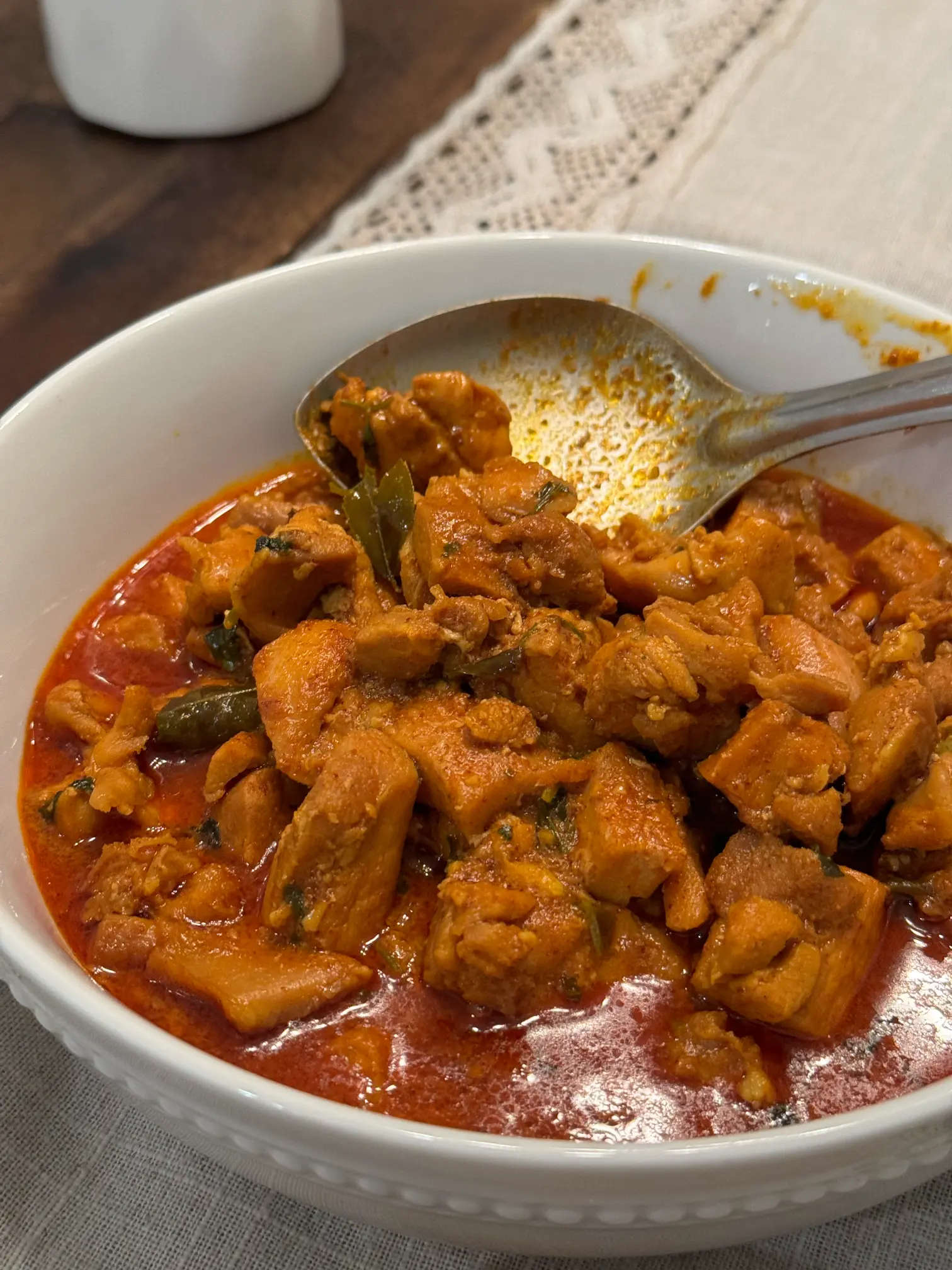

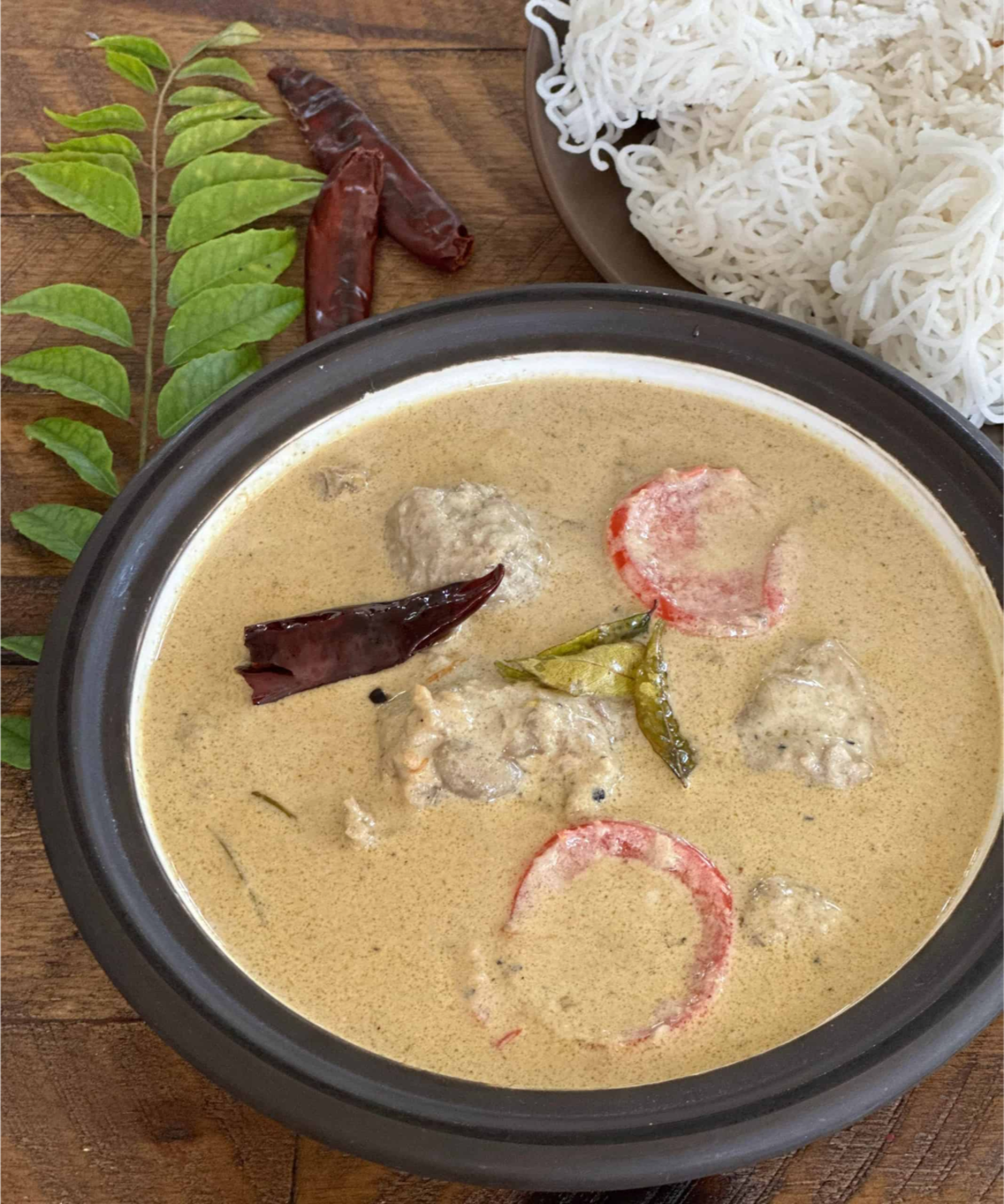


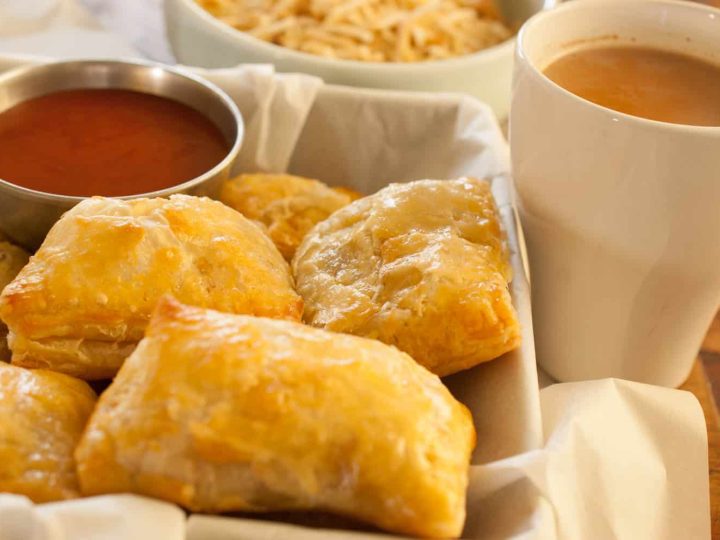
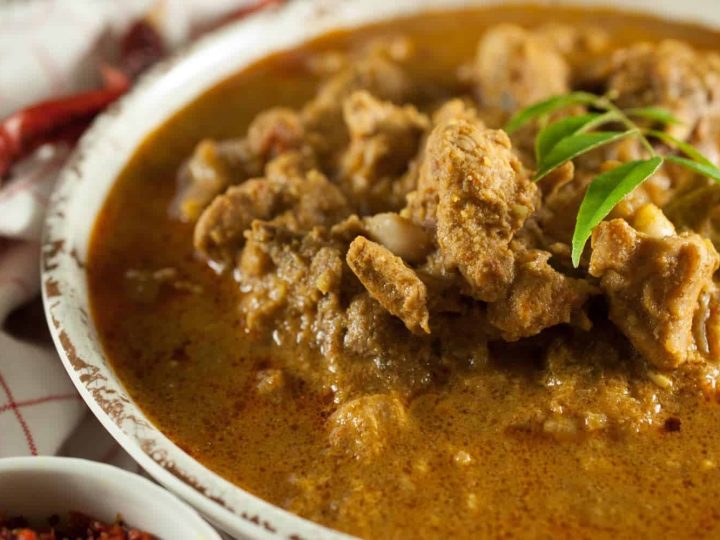

Totally worth the effort! Super tasty!